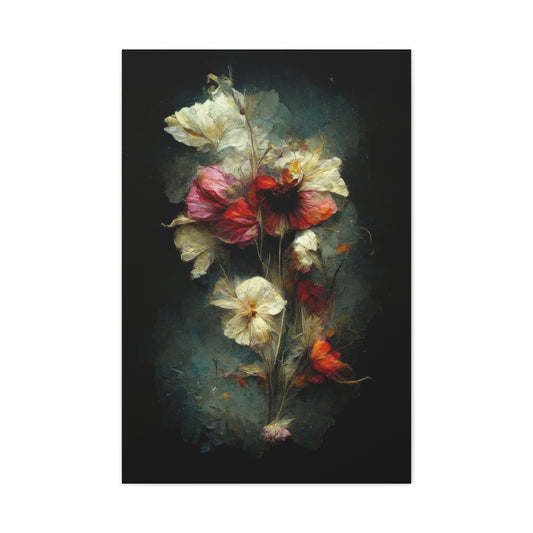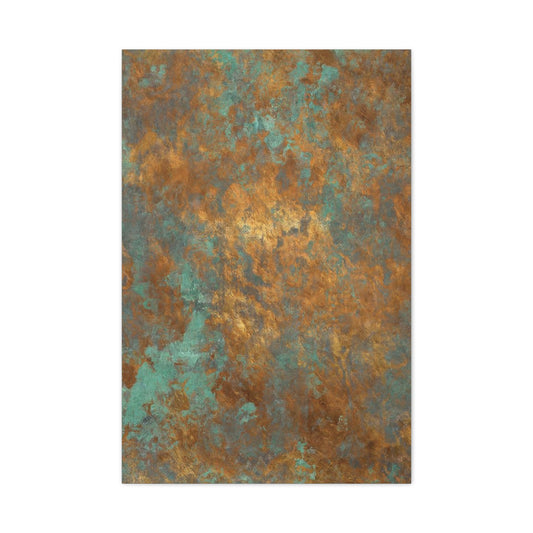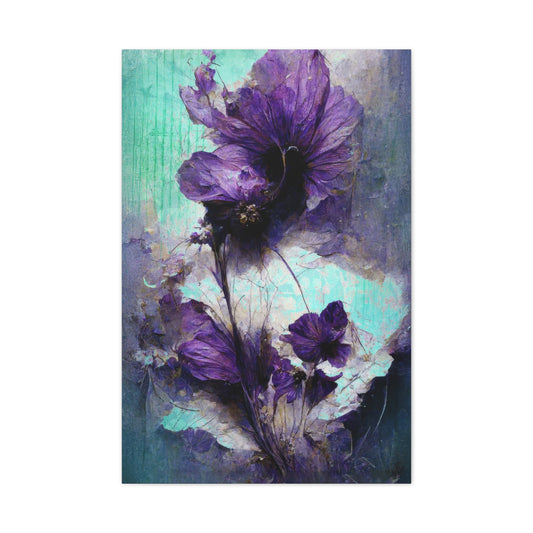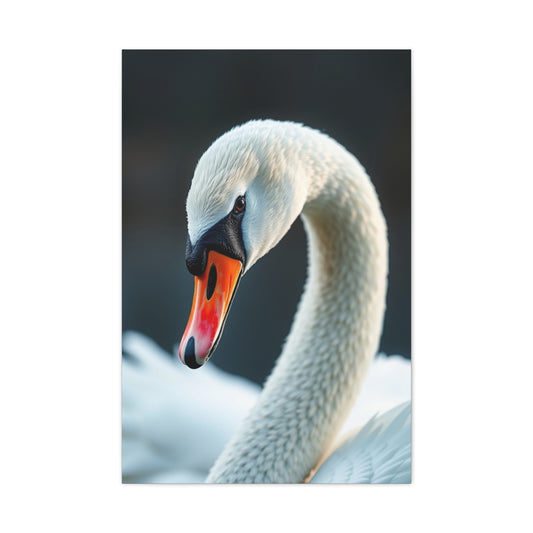Discover remarkable wall decoration strategies that infuse your living spaces with magical holiday spirit through innovative design approaches and timeless seasonal aesthetics.
The winter celebration season represents one of the most cherished periods for creating memorable home environments that capture the essence of joy, togetherness, and seasonal magic. Wall decorations serve as pivotal elements in establishing festive atmospheres that extend beyond traditional tree-centered displays, transforming entire living spaces into immersive holiday experiences that enchant family members and guests alike.
Contemporary holiday decorating philosophy increasingly embraces comprehensive environmental approaches that integrate wall treatments with overall seasonal design themes. This holistic methodology creates cohesive celebratory atmospheres where every surface contributes to the festive narrative, resulting in more impactful and memorable holiday environments than piecemeal decorative additions.
The psychological impact of seasonal wall decorations extends far beyond mere aesthetic enhancement. Environmental psychology research demonstrates that thoughtfully designed holiday environments promote feelings of warmth, security, and social connection while reducing stress levels associated with winter months and busy celebration schedules. These benefits make strategic wall decoration investment worthwhile for both immediate enjoyment and long-term emotional well-being.
Cultural traditions surrounding holiday wall decorations vary significantly across different regions and family backgrounds, offering rich inspiration sources for contemporary interpretations. Understanding these historical precedents enables modern practitioners to honor traditional values while adapting decorative approaches to suit current lifestyle requirements and aesthetic preferences.
Sustainability considerations increasingly influence holiday decoration selection, with environmentally conscious celebrants seeking reusable, natural, and locally sourced materials that minimize environmental impact while maintaining visual appeal and festive effectiveness. This trend toward sustainable celebrations creates opportunities for creative problem-solving and innovative decorative approaches.
The economic aspects of holiday wall decoration require strategic planning to maximize visual impact while maintaining reasonable budget parameters. Understanding cost-effective techniques, DIY opportunities, and investment-worthy permanent installations enables celebrants to create stunning seasonal displays without financial strain or compromising other holiday priorities.
Vibrant Color Contrast Techniques Using Traditional Palette Applications
Color plays a significant role in holiday décor, especially when traditional hues such as red, green, and white are strategically used to create an atmosphere of warmth and festivity. These classic holiday color combinations have stood the test of time for a reason—they evoke nostalgia, comfort, and joy. When applied thoughtfully through strategic wall decoration techniques, these traditional colors can be revitalized and used to create dynamic contrasts and visual harmony. With careful attention to how color relationships are managed, the red, green, and white palette can take on new meaning, offering both timeless charm and fresh appeal.
The art of applying vibrant color contrast through traditional palettes requires understanding the subtleties of color psychology, spatial dynamics, and how light influences our perception of color. Using red, green, and white in combination allows for a balanced interplay of warmth and neutrality, where each color complements the others while creating a dynamic tension that is pleasing to the eye. This technique can work in a variety of spaces, from cozy living rooms to festive dining areas, providing the perfect backdrop for holiday gatherings, celebrations, and daily life.
Red Accents as Bold Focal Points
Red, often regarded as the most dramatic and emotionally charged color in the traditional holiday palette, offers a powerful way to anchor a space. When applied as an accent against neutral walls, red can command attention and create a striking focal point without overwhelming the room. This is particularly effective when decorating residential spaces designed for everyday living, where a more restrained approach is necessary to maintain visual comfort.
Incorporating red through wall art, pillows, throws, or even accent furniture introduces warmth and energy to the room. Red is known to stimulate feelings of passion, excitement, and love—qualities that are especially welcome during the holiday season. However, the key to successful red accent integration lies in moderation. Too much red can create a chaotic or aggressive atmosphere, so its placement should be intentional and carefully balanced with other elements within the space.
Strategic placement of red elements can establish a visual rhythm throughout the room. For example, a red centerpiece on a dining table or a red throw blanket on a neutral-colored sofa draws the eye and adds a burst of festive color without overwhelming the space. This rhythm can be enhanced further by incorporating various shades of red—from deep, rich crimson tones to brighter, more cheerful cherry reds—creating depth and interest while maintaining harmony.
Green Elements for Natural Symbolism and Balance
Green is a color that carries deep psychological and cultural significance, especially in the context of traditional holiday décor. Often associated with nature, renewal, and tranquility, green is the perfect complement to the vibrant reds in holiday palettes. Green evokes feelings of calm and peace, making it an ideal choice for spaces that are intended to provide respite and relaxation, such as living rooms, bedrooms, and reading nooks.
When using green as part of a holiday décor scheme, it’s essential to consider its symbolic connections to the season, especially its role in evergreen plants. Whether using deep forest greens, rich emerald tones, or lighter, more refreshing lime shades, green can be adapted to suit the specific mood and atmosphere desired in a room. For instance, darker greens may be better suited to formal spaces or evening gatherings, where a sense of sophistication and warmth is desired. On the other hand, brighter greens can infuse a sense of playfulness and lightness, making them ideal for more casual spaces or family rooms.
Green elements can be integrated through various design elements such as wall décor, floral arrangements, or textiles. Subtle uses of green can provide balance to red and white elements, preventing the overall palette from feeling too intense or overwhelming. Incorporating natural elements like houseplants or wreaths can also enhance the connection to nature, while providing texture and depth that complements other decorative pieces.
White as a Foundation for Light and Neutral Balance
White is the most versatile and transformative color in the traditional holiday palette. It serves multiple functions in color composition, from providing visual rest to reflecting light and brightening spaces. In holiday décor, white acts as a neutral foundation, creating a sense of openness and airiness while helping to balance more saturated colors like red and green.
Different shades of white, ranging from pure snow-white to warmer cream or ivory tones, can significantly alter the emotional response of the room. Pure white reflects light, giving the space a crisp, clean, and modern aesthetic. In contrast, creamier whites introduce a softer, cozier feel, evoking warmth and comfort. These variations of white can be applied to walls, ceilings, and even furniture to create a neutral backdrop that allows red and green accents to shine without competing for attention.
Incorporating white as a foundational element ensures that the room doesn’t become visually overwhelmed by too many bold colors. It provides the necessary breathing space for other hues to shine while also enhancing the room’s overall brightness. Whether used on walls, furniture, or decorative accessories like curtains or throw blankets, white establishes a calming atmosphere that works in tandem with other color elements.
Proportional Management for Balanced Color Distribution
One of the most critical considerations when working with traditional holiday color schemes is managing the proportions of each color. Too much of one color can dominate the space, making the room feel visually heavy or chaotic. On the other hand, using too little of a color can create an unbalanced and incomplete aesthetic. Proportion management becomes crucial in ensuring that red, green, and white are distributed harmoniously throughout the room.
A common rule of thumb followed by interior designers is the 60-30-10 distribution principle, which is particularly effective when implementing traditional color combinations. According to this guideline, approximately 60% of the space should be dedicated to a dominant color (usually white or another neutral hue), 30% to a secondary color (such as green), and 10% to an accent color (such as red). This distribution allows for visual balance, preventing one color from overwhelming the space while creating dynamic contrast.
For example, the walls might be painted in soft ivory or white (the dominant color), while green might be incorporated through throw pillows, area rugs, and drapery. Red can then be added through smaller accent pieces such as holiday wreaths, table centerpieces, or artwork. This careful balance ensures that the space feels cohesive, festive, and visually pleasing without being overly saturated with any one color.
Lighting Interactions with Red, Green, and White Palettes
Lighting plays a vital role in the way colors are perceived and how they interact within a space. In holiday decorating, lighting can enhance or completely transform the impact of traditional red, green, and white color combinations. Natural daylight, artificial lighting, and even colored accent lighting can dramatically alter the overall atmosphere of the room, requiring careful coordination to achieve the desired effect.
Under natural daylight, red and green can appear more vibrant and true to their original hues, while white may take on a slightly cooler tone. In contrast, warm artificial lighting can make the red and green elements appear richer and more inviting, while also softening the white tones to create a more intimate atmosphere. Colored accent lighting, such as the use of soft green or red light during the evening, can further enhance the holiday feel, especially when used with decorative features like string lights or chandeliers.
Strategic lighting placement is essential for ensuring that the holiday color palette is showcased in the best possible way. Overhead lighting, task lighting, and accent lighting should all work in tandem to highlight key design elements while maintaining the integrity of the overall color scheme. For example, placing warm-toned lights around green wreaths or red holiday décor can add depth and texture, making the colors appear more vibrant and dynamic.
Incorporating Textures and Patterns for Visual Interest
While the traditional color palette of red, green, and white is timeless, incorporating varied textures and patterns into the décor scheme can add a modern twist while maintaining the classic appeal of the colors. Layering different textures, such as velvet cushions, woolen throws, or textured wall hangings, enhances the tactile experience of the space and introduces visual depth. Patterns such as plaid, stripes, or intricate florals can introduce an extra layer of dimension without clashing with the core color scheme.
Textile choices are particularly important when working with traditional color palettes, as they help soften the boldness of red and green while enhancing the overall visual interest. A white knit throw can break up the intensity of a red sofa, while a green patterned rug can introduce a subtle nod to the outdoors without being overly dominant. These small, textural choices help create a balanced and inviting atmosphere, while ensuring that the color scheme remains cohesive and visually interesting.
Textile-Based Wall Enrichment Through Ribbon and Fabric Applications
Fabric elements offer versatile, cost-effective approaches for creating sophisticated holiday wall decorations that add textural interest while maintaining easy installation and removal capabilities. Ribbon applications prove particularly effective for creating custom designs that reflect personal style preferences while honoring traditional holiday aesthetics.
Ribbon selection criteria include color coordination, texture variation, and durability considerations that ensure attractive appearance throughout extended display periods. Satin ribbons provide elegant luster effects, while burlap alternatives offer rustic charm suitable for farmhouse or casual decorating approaches. Grosgrain ribbons combine durability with classic appearance for versatile application opportunities.
Installation techniques for ribbon-based wall decorations range from temporary adhesive methods to semi-permanent mounting systems that enable seasonal reuse without wall damage. Understanding different mounting approaches enables appropriate selection based on wall surface types, decoration complexity, and long-term reuse intentions.
Pattern creation opportunities through ribbon arrangements include geometric designs, organic flowing shapes, and representational holiday symbols that coordinate with existing room aesthetics. Symmetrical patterns provide formal, balanced appearances while asymmetrical arrangements offer dynamic, contemporary interpretations of traditional themes.
Layering strategies enable complex visual effects through overlapping ribbon applications in coordinating or contrasting colors. These techniques create depth and dimension that prevent flat, single-layer appearances while adding sophisticated design elements that demonstrate advanced decorative skills and attention to detail.
Maintenance considerations for fabric-based wall decorations include dust accumulation, fabric deterioration, and color fading that may occur during extended display periods. Planning for periodic cleaning and eventual replacement ensures maintained appearance quality throughout celebration seasons while protecting wall surfaces from potential damage.
Illumination Artistry for Ambient Holiday Atmosphere Creation
Strategic lighting integration transforms ordinary wall spaces into magical holiday environments through creative illumination techniques that enhance existing decorative elements while creating entirely new visual experiences. Contemporary lighting technology offers unprecedented opportunities for customizable, energy-efficient seasonal displays.
LED technology advantages include superior energy efficiency, extended operational life, and reduced heat generation that makes indoor applications safer and more economical than traditional incandescent alternatives. Color-changing LED systems enable dynamic displays that can be programmed for different effects throughout celebration periods.
Pattern formation through strategic light placement creates architectural interest on plain wall surfaces while highlighting existing decorative elements. Tree-shaped arrangements, star configurations, and geometric patterns provide structured approaches that coordinate with traditional holiday symbolism while offering contemporary interpretation opportunities.
Dimming capabilities enable atmospheric adjustment throughout different times of day and various celebration activities. Bright settings provide adequate illumination for social gatherings while subdued levels create intimate, cozy atmospheres for quiet family time or romantic holiday evenings.
Timer integration eliminates daily setup and takedown requirements while ensuring consistent lighting schedules that maximize enjoyment without excessive energy consumption. Programmable systems enable complex lighting sequences that create dynamic displays throughout evening hours while automatically shutting off during late-night periods.
Safety protocols for holiday lighting installations emphasize proper electrical connections, fire prevention measures, and compliance with local building codes. Understanding load limitations, extension cord ratings, and mounting techniques prevents hazardous conditions while ensuring reliable operation throughout celebration seasons.
Traditional Symbol Integration Through Natural Material Applications
Wreaths, garlands, and other traditional holiday symbols gain enhanced impact when incorporated into comprehensive wall decoration schemes that honor historical significance while adapting to contemporary living environments. Natural materials provide authentic textures and seasonal fragrances that synthetic alternatives cannot replicate.
Wreath versatility extends far beyond traditional door applications, with wall-mounted installations offering opportunities for creative clustering, varied sizing, and innovative material combinations. Different wreath sizes create visual rhythm while varying materials add textural interest that prevents monotonous appearances.
Garland applications provide flexible decorative solutions that adapt to various architectural features including doorways, windows, mantlepieces, and stairway railings. Fresh evergreen garlands offer authentic seasonal fragrance while artificial alternatives provide consistent appearance throughout extended display periods.
Stocking integration creates nostalgic references to traditional holiday practices while providing opportunities for personalization through monogramming, color coordination, and material selection. Wall-mounted stocking displays work particularly well in homes without traditional fireplace mantels while maintaining beloved family traditions.
Natural material sourcing considerations include availability, sustainability, and local climate adaptation that ensure successful decoration projects while supporting regional economies and environmental responsibility. Local evergreen varieties often provide superior longevity and authentic regional character compared to imported alternatives.
Preservation techniques extend natural material lifespan while maintaining attractive appearance throughout celebration seasons. Proper hydration, appropriate storage between uses, and strategic placement away from heat sources help maximize investment returns while ensuring continued beauty and fragrance effectiveness.
Monochromatic Sophistication Using Winter White Themes
All-white holiday decorating approaches offer sophisticated alternatives to traditional multicolor schemes while creating elegant, serene environments that emphasize texture, form, and light rather than vibrant color contrasts. These approaches work particularly well in contemporary interior settings or formal entertaining environments.
White variation recognition proves essential for successful monochromatic implementations, as different white formulations from cool blue-whites to warm cream-whites create dramatically different atmospheric effects. Understanding these subtle differences enables coordinated selection that maintains visual harmony while providing necessary contrast points.
Textural emphasis becomes crucial in monochromatic white schemes where color variation cannot provide visual interest. Combining smooth surfaces with rough textures, matte finishes with glossy elements, and solid forms with openwork designs creates dynamic visual compositions despite limited color palettes.
Metallic accent integration adds sophisticated sparkle to white holiday schemes without introducing competing color elements. Silver, platinum, and crystal accessories enhance cool white palettes while gold and copper additions warm neutral white foundations and create more traditional atmospheric effects.
Lighting coordination proves particularly important in white schemes where inadequate illumination can create sterile, hospital-like appearances rather than warm, inviting holiday atmospheres. Warm lighting temperatures and strategic accent illumination ensure white decorations feel celebratory rather than clinical.
Seasonal transition considerations enable white holiday decorations to extend beyond traditional celebration periods into winter months where pure white themes coordinate naturally with snow and ice elements. This extended usability provides greater value returns on decoration investments while maintaining attractive seasonal displays.
Ethereal Illumination Effects Using Fairy Light Installations
Fairy lights represent versatile, enchanting decoration elements that create magical atmospheric effects while offering extensive customization opportunities through various installation techniques and creative arrangement patterns. These delicate illumination systems work effectively as primary focal points or supporting accent elements.
Vertical cascade installations create dramatic waterfall effects that draw attention toward specific wall areas while providing gentle ambient lighting that enhances overall room atmosphere. These installations work particularly well in rooms with high ceilings where vertical space can accommodate extended light strings without overwhelming smaller spaces.
Horizontal spanning techniques enable fairy lights to define architectural features, create visual boundaries, or establish decorative frameworks for other holiday elements. Strategic horizontal placement can visually expand narrow rooms while providing consistent illumination that enhances adjacent decorative displays.
Backdrop creation using fairy lights transforms plain wall surfaces into sparkling focal points that serve as photography backgrounds or artistic installations. Dense light clustering creates brilliant effects while sparse arrangements provide subtle enhancement that doesn't overpower other decorative elements.
Color coordination with existing room palettes ensures fairy light installations enhance rather than compete with established interior design themes. Warm white lights provide universal compatibility while colored options should coordinate carefully with existing color schemes and overall aesthetic approaches.
Battery-powered options eliminate electrical cord management challenges while providing installation flexibility in locations distant from electrical outlets. Solar-charged systems offer sustainable operation for window installations while timer functions ensure consistent operation without manual intervention requirements.
Metallic Accent Integration for Luxurious Holiday Displays
Metallic decorative elements add sophistication and glamour to holiday wall displays while providing reflective surfaces that amplify existing lighting and create dynamic visual interest throughout different times of day. Strategic metallic integration elevates simple decorative schemes to professional-quality installations.
Gold applications evoke traditional luxury while coordinating beautifully with warm color palettes including deep reds, forest greens, and rich burgundies. Different gold finishes from bright polished surfaces to subtle brushed textures offer various intensity levels suitable for different decorative approaches and room styles.
Silver integration provides contemporary elegance while complementing cool color schemes and modern interior aesthetics. Silver's reflective properties maximize available light while creating sophisticated contrasts against darker wall colors or bold decorative backgrounds.
Copper accents offer unique warmth that bridges traditional and contemporary aesthetics while providing distinctive color variation from standard gold and silver alternatives. Copper's natural aging properties can add authentic patina effects over multiple seasons while maintaining attractive appearance.
Scale relationships prove crucial when incorporating metallic elements to prevent overwhelming effects or inappropriate dominance within overall decorative compositions. Large metallic pieces work well as focal points while smaller elements provide accent coordination and visual rhythm throughout room displays.
Maintenance requirements for metallic decorations include regular cleaning to maintain reflective properties and prevent tarnishing that can diminish visual impact. Understanding appropriate cleaning techniques for different metallic finishes ensures preserved appearance quality throughout celebration seasons and storage periods.
Minimalist Elegance Through Restrained Decorative Approaches
Simplified holiday decorating philosophies emphasize quality over quantity while creating sophisticated seasonal displays that integrate seamlessly with contemporary interior aesthetics. These approaches prove particularly suitable for small spaces, modern architectural styles, or personal preferences favoring understated elegance.
Cluster arrangements using limited decorative elements create visual impact through strategic grouping rather than extensive distribution throughout available space. Wreath clusters, candle groupings, or ornament arrangements provide focal points while maintaining overall restraint and sophisticated simplicity.
Negative space utilization becomes crucial in minimalist approaches where empty areas contribute to overall composition effectiveness. Understanding balance between decorated and undecorated areas ensures visual harmony while preventing overcrowded appearances that contradict minimalist principles.
Color palette restriction to two or three coordinated colors creates coherent visual narratives while preventing overwhelming complexity that can detract from intended sophisticated simplicity. Monochromatic approaches or analogous color combinations work particularly well for minimalist holiday decorating strategies.
Quality emphasis over quantity ensures selected decorative elements demonstrate superior craftsmanship and materials that justify their prominence within restrained display schemes. Investment in fewer, higher-quality pieces often produces more satisfying results than extensive collections of lesser items.
Architectural integration considerations ensure minimalist decorations complement rather than compete with existing interior design elements while highlighting rather than obscuring architectural features that contribute to room character and spatial definition.
Interactive and Personalized Wall Decoration Concepts
Custom lettering, family-specific messaging, and interactive decorative elements create personalized holiday environments that reflect individual family traditions while providing opportunities for creative expression and meaningful memory creation. These approaches emphasize personal significance over commercial standardization.
Hand-lettered greetings offer authentic, personal touches that commercial products cannot replicate while providing opportunities for family participation in decoration creation processes. Chalkboard applications enable seasonal message updates while whiteboard alternatives offer easy modification throughout celebration periods.
Adhesive lettering systems provide professional appearance without requiring artistic skills while offering extensive font, size, and color options suitable for various wall surfaces and aesthetic preferences. Removable adhesives protect wall surfaces while enabling seasonal updates and storage for future reuse.
Photography integration creates personalized displays that celebrate family history while establishing connections between past and present celebration traditions. Holiday-themed photo arrangements, memory displays, and achievement celebrations add intimate, meaningful elements to seasonal decorating schemes.
Children's artwork incorporation acknowledges family creativity while providing age-appropriate participation opportunities that create lasting memories and encourage continued artistic development. Rotating displays enable multiple works to receive featured placement throughout celebration seasons.
DIY project coordination enables family participation in decoration creation while building traditions that extend beyond passive consumption of commercial products. Craft projects, construction activities, and creative collaboration create shared experiences that become treasured family memories alongside visual decoration benefits.
Advanced Decoration Techniques and Professional Implementation Strategies
Sophisticated holiday wall decoration approaches incorporate advanced design principles, professional installation techniques, and comprehensive planning strategies that create memorable seasonal environments while ensuring successful implementation and long-term satisfaction with decoration investments.
Theme development requires coordinating multiple decorative elements within coherent aesthetic narratives that reflect personal preferences while maintaining visual harmony throughout celebration periods. Successful theme implementation balances traditional expectations with individual creativity and contemporary lifestyle requirements.
Installation planning prevents common mistakes while ensuring successful decoration mounting that protects wall surfaces and maintains attractive appearance throughout extended display periods. Understanding different wall types, mounting hardware options, and weight distribution requirements enables appropriate technique selection.
Storage solutions for seasonal decorations require organized systems that protect decoration condition while facilitating efficient setup and takedown processes. Climate-controlled storage, appropriate containers, and systematic organization prevent damage while reducing setup time and effort requirements.
Budget management strategies enable impressive holiday displays while maintaining reasonable financial parameters through strategic purchasing, DIY opportunities, and multi-season investment planning. Understanding cost-effective alternatives and prioritizing high-impact elements maximizes decoration effectiveness within available resources.
Timeline coordination ensures successful decoration completion before celebration periods while allowing adequate time for procurement, preparation, and installation activities. Advanced planning prevents last-minute stress while enabling leisurely enjoyment of decoration creation processes.
Professional consultation becomes valuable for complex installations, extensive decoration schemes, or homes with challenging architectural features that require specialized knowledge or equipment. Understanding when professional assistance provides value ensures optimal results while preventing costly mistakes or safety hazards.
Maintenance schedules throughout celebration seasons preserve decoration appearance while identifying potential issues before they become significant problems. Regular inspection, minor adjustments, and proactive maintenance ensure continued beauty and safety throughout extended display periods.
Holiday wall decoration represents an opportunity to transform living spaces into magical environments that celebrate seasonal traditions while expressing personal creativity and family values. Success requires balancing traditional expectations with individual preferences while implementing appropriate techniques that ensure attractive, safe, and meaningful seasonal displays. Whether pursuing elaborate installations or subtle enhancements, thoughtful holiday wall decoration creates lasting memories while enriching celebration experiences for family members and guests throughout the magical winter season.
Final Thoughts
Holiday wall decoration is far more than just a seasonal embellishment—it is an immersive expression of tradition, personality, and heartfelt celebration. As we strive to create meaningful environments that capture the essence of the holidays, wall décor emerges as a powerful design element that allows us to shape the emotional and visual tone of our homes. Whether you embrace opulence, minimalism, tradition, or innovation, thoughtful wall decoration is a transformative force that enhances not only aesthetics but also the overall atmosphere and emotional experience of holiday living.
In today’s fast-paced world, these seasonal moments of joy, connection, and creativity are more valuable than ever. They offer opportunities to step away from daily routines and step into magical spaces filled with light, laughter, and warmth. The act of decorating becomes a ritual—one that brings families together, sparks conversations, evokes cherished memories, and sets the stage for new ones. Holiday wall decorations serve as a visual narrative of these stories, layering meaning into every wreath, every light strand, every carefully placed ribbon, and every handwritten message.
From a design perspective, holiday wall decoration allows for unparalleled experimentation with color theory, texture, proportion, and light. The harmonious interplay of traditional colors—such as red, green, and white—enables dynamic spatial compositions that feel both timeless and fresh. The addition of texture through fabrics, mixed materials, and sculptural accents introduces a tactile quality that adds richness and sophistication. Lighting, particularly when strategically placed, has the capacity to shape ambiance and mood—making spaces feel cozy, magical, or vibrant depending on the desired effect.
Furthermore, modern holiday decorating practices now embrace sustainability and personalization, reflecting a deeper shift toward intentional living. From using locally sourced evergreens to choosing long-lasting LED lights and investing in reusable, handcrafted pieces, homeowners are making conscious decisions that align holiday beauty with environmental responsibility. Likewise, the incorporation of family artwork, photos, and interactive elements ensures that decoration goes beyond surface appeal, embedding personal significance into every display.
Ultimately, investing thought and care into holiday wall decoration is not about extravagance—it is about creating a meaningful environment that resonates with you and your loved ones. It is a celebration of presence, creativity, and shared joy. Whether modest or elaborate, each decorative touch contributes to a larger story—one that will be remembered, cherished, and looked forward to, year after year. In this way, your walls become more than boundaries—they become canvases of celebration, tradition, and love.
























